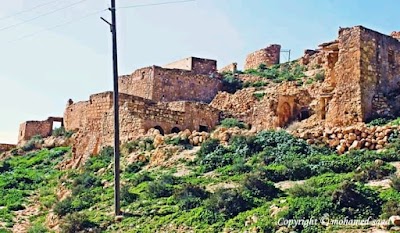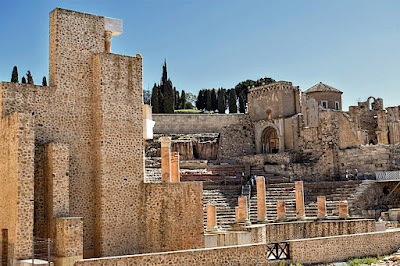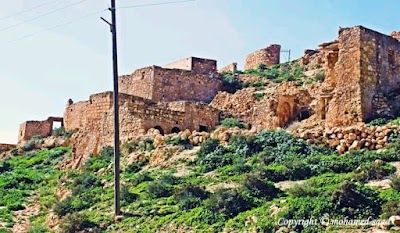Al Jabal al Gharbi Archaeological Sites (المواقع الأثرية للجبل الغربي)
Overview
Al Jabal al Gharbi Archaeological Sites, located in the Jabal al Gharbi District of Libya, offer visitors an enthralling journey through time, showcasing the grandeur and remarkable achievements of ancient civilizations that have beautifully endured through the ages. Nestled in the rugged terrain of the Jabal al Gharbi mountains, these sites stand as a testament to the rich and diverse historical tapestry that has shaped this captivating region.
A Historical Mosaic
The area surrounding Jabal al Gharbi has been inhabited for thousands of years, with evidence indicating that various civilizations, from the indigenous Berber populations to the powerful influences of Phoenician, Greek, Roman, and Islamic cultures, have left their mark here. This convergence of cultures has resulted in a unique mosaic of archaeological treasures that beckon history enthusiasts and casual travelers alike.
The Ancient City of Ghirza
Among the most significant and well-preserved sites is the ancient city of Ghirza. Originally a Roman settlement, Ghirza provides a fascinating glimpse into the agricultural prosperity and architectural ingenuity of its time. Visitors can marvel at the remnants of grand stone structures, including well-preserved mausoleums adorned with elaborate carvings and inscriptions. The site also features remnants of farmhouses, cisterns, and fortified granaries, showcasing the Romans' advanced agricultural practices and their adept adaptation to the arid environment.
Leptis Magna's Inland Influence
Another noteworthy site is the Leptis Magna outpost within the region. Although Leptis Magna itself is a coastal city, its influence extended inland to the Jabal al Gharbi district. Artifacts and ruins in this area reflect the prosperity of one of the most sophisticated and affluent cities of the Roman Empire. Paved streets, majestic arches, and remnants of grand public buildings underscore the architectural brilliance that characterized the Roman era, serving as silent narrators of the life and commerce that once thrived in this bustling outpost.
Islamic and Byzantine Influences
Beyond the Roman era, the Jabal al Gharbi district is also home to vestiges from subsequent historical periods, including Islamic and Byzantine influences. The region’s strategic location made it a crossroads for various cultures and empires, each contributing to its historical narrative. Islamic architecture and artifacts, such as ancient mosques and intricate pottery, vividly illustrate the enduring legacy of Islamic civilization in shaping the spiritual and cultural fabric of the area.
Natural Beauty of the Jabal al Gharbi Mountains
For nature enthusiasts, the Jabal al Gharbi mountains themselves are a sight to behold, offering breathtaking landscapes and vistas that beautifully complement the archaeological wonders. The rugged terrain, dotted with caves and rock shelters, has also yielded prehistoric artifacts, indicating that humanity's connection to this land runs deep into prehistory. Explorers can wander through these scenic paths, discovering the natural beauty that has witnessed millennia of human history.
Preservation and Exploration
An intriguing fact about Al Jabal al Gharbi is the remarkable state of preservation of many artifacts and structures, a phenomenon attributed to the region's dry climate. This natural preservation has enabled archaeologists to uncover and study the daily lives, religious practices, and burial traditions of ancient civilizations with minimal deterioration over centuries.
Foreign tourists visiting Al Jabal al Gharbi Archaeological Sites can expect a rare and profound experience as they traverse through these ancient ruins. It is advisable to plan the visit with a knowledgeable local guide who can provide deeper insights into the historical context and significance of the sites. Additionally, tourists should respect and preserve the integrity of the archaeological sites by adhering to local regulations and refraining from disturbing the relics.
A Captivating Treasure Trove
In conclusion, Al Jabal al Gharbi Archaeological Sites are a captivating treasure trove for history buffs, culture seekers, and nature lovers alike. The region’s diverse historical layers beautifully illustrate the story of human civilization's endurance and ingenuity. Whether marveling at Roman architectural marvels, exploring ancient Islamic influences, or enjoying the majestic natural scenery, visitors are sure to depart with a profound appreciation of Libya’s rich cultural heritage.






